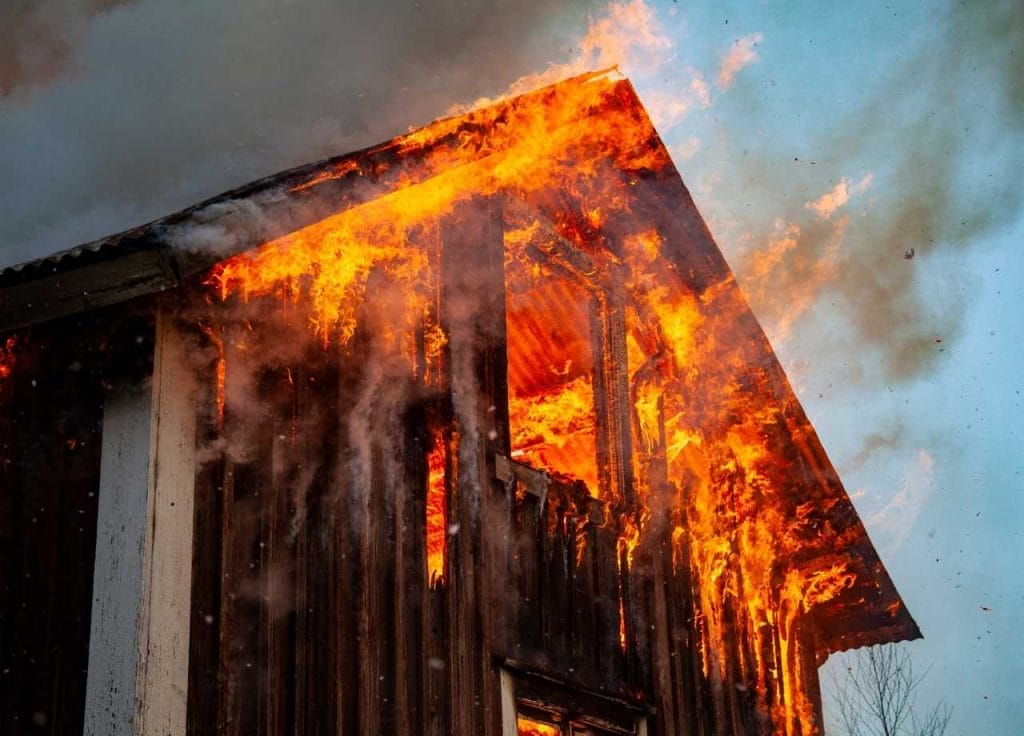When a fire hits your home, the visible damage is only part of the story. Long after the flames are put out, the smoke and soot that remain can cause just as much harm—and in some cases, even more. Homeowners are often surprised to learn that regular cleaning isn’t enough to fully remove smoke damage. That’s where professional smoke remediation comes in. At First Coast Contracting, we provide smoke and fire damage restoration services for homeowners in Jacksonville, St. Augustine, and nearby areas—helping people recover fully, not just surface-level.
Table of Contents
Why Smoke Damage Is More Complicated Than It Looks
Smoke doesn’t just leave a smell or some residue. It penetrates deep into porous materials like drywall, insulation, carpeting, furniture, and even structural components. The microscopic particles from smoke include acids and carcinogens that continue to corrode materials and degrade air quality long after the fire is out. It can affect HVAC systems, cause respiratory issues, and even trigger long-term property damage if not properly addressed.
Many homeowners attempt to clean up on their own, using common household products or basic cleaning services. While these efforts might reduce the appearance of damage or mask odors temporarily, they often miss the deeper contamination that lingers in hidden areas.
Cleaning: What It Covers and Where It Falls Short
Cleaning after a fire usually involves surface-level actions. This can include wiping down walls, vacuuming soot, shampooing carpets, and using odor-neutralizing sprays. It’s often the first step property owners take, especially if the damage seems minor.
But here’s the problem: surface cleaning doesn’t reach the smoke particles embedded in porous materials like drywall, insulation, wood framing, and upholstery. It may reduce the appearance of damage temporarily, but lingering odors, discoloration, and even health effects often return.
Conventional cleaning techniques also don’t address structural concerns. If smoke penetrated framing members or compromised HVAC systems, those problems remain hidden until they create bigger issues—mold, corrosion, or respiratory hazards, to name a few.
Smoke Remediation: A Comprehensive, Technical Process
Smoke remediation goes far beyond basic cleaning. It’s a multi-step process that requires specialized equipment, training, and a deep understanding of how smoke behaves in different environments. The goal is not just to clean but to neutralize and eliminate all traces of smoke contamination.

Here are some of the key components of professional smoke remediation:
Assessment and Testing:
The first step involves evaluating the extent of the smoke damage. Professionals use thermal imaging and other diagnostic tools to find affected areas, even those not visible to the eye.
Containment and Air Scrubbing:
Before cleaning begins, the work area is sealed off to prevent cross-contamination. Industrial-grade air scrubbers with HEPA filters are used to capture airborne particles.
Soot and Residue Removal:
Different types of fires (protein fires, synthetic fires, etc.) leave behind different types of residue. Technicians select appropriate methods and solvents to remove these residues without damaging the underlying surfaces.
Material Removal and Restoration:
In cases where materials are too damaged to restore, remediation includes removing and replacing those components—whether it’s drywall, insulation, or flooring.
Deodorization and Air Purification:
Ozone generators, hydroxyl machines, and thermal fogging are used to neutralize odors at the molecular level, not just cover them up.
HVAC Cleaning:
Smoke can travel through ductwork and contaminate the entire ventilation system. A proper remediation job includes cleaning and sealing ducts to prevent re-contamination.
Why DIY or Standard Cleaning Isn’t Enough
The biggest difference between cleaning and remediation is depth. Cleaning is about appearances; remediation is about health, safety, and long-term protection. Without proper remediation, smoke particles can linger in your home indefinitely, continuing to damage materials and compromise indoor air quality.
Insurance companies often require documentation of professional remediation to validate claims related to smoke damage. DIY efforts or incomplete cleaning can not only leave hidden issues unresolved but also affect your ability to receive full reimbursement for restoration work.
Long-Term Risks of Incomplete Smoke Removal
One of the more dangerous misconceptions is that if you can’t see or smell smoke, it’s gone. In reality, microscopic particles can embed themselves deep in building materials and gradually release harmful compounds over time.
Persistent smoke exposure can lead to:
- Increased risk of respiratory illness, especially in children and the elderly
- Ongoing corrosion of metal components, wiring, and appliances
- Lingering odors that make the home unlivable or reduce property value
- Mold growth in humid environments where soot has settled
These risks only grow the longer smoke residue is allowed to remain. Prompt, thorough remediation is essential to prevent secondary damage and ensure your home is truly safe and restored.

Choosing the Right Approach After a Fire
Deciding between cleaning and remediation shouldn’t come down to cost or convenience. It should be about safety and protecting your property. Cleaning might seem faster or cheaper, but if it doesn’t eliminate all the contaminants, you’re left with a ticking time bomb of health and structural concerns.
The right solution usually starts with an assessment from a certified restoration professional. They can help determine the scope of the smoke damage and recommend the best course of action—one that addresses both visible and hidden threats.
Final Thoughts
The aftermath of a fire is overwhelming. It’s natural to want to get back to normal as quickly as possible. But choosing the right recovery method matters. Smoke remediation isn’t just a step up from cleaning—it’s an essential part of protecting your home, your health, and your investment.
If your home has experienced a fire, take the time to understand what smoke has left behind. Surface cleaning might help you feel like you’re moving forward, but real recovery means dealing with the problem at its source. That’s what professional remediation delivers.


